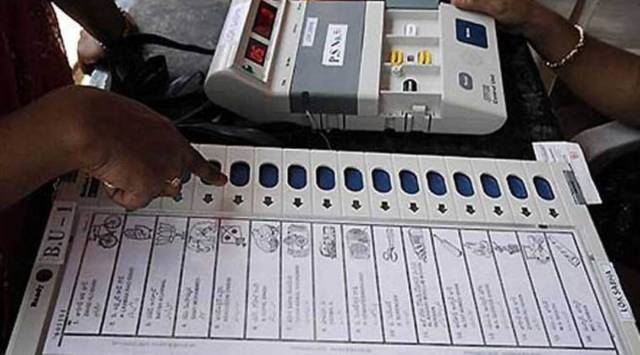Stay updated with the latest - Click here to follow us on Instagram
Election Commission develops remote EVMs to help domestic migrants vote
The EC said that it has invited eight national and 57 state political parties on January 16 to demonstrate the functioning of the remote EVM and has asked for their written views by January 31.
 The Election Commission on Thursday said it has developed a prototype of the remote electronic voting machine for domestic migrant voters. (File Representational Photo)
The Election Commission on Thursday said it has developed a prototype of the remote electronic voting machine for domestic migrant voters. (File Representational Photo) Underlining the problems faced by domestic migrants travelling back home to vote, the Election Commission (EC) said on Thursday that it has developed remote polling stations.
“Migration based disenfranchisement is indeed not an option in the age of technological advancement. The voter turnout in General Elections 2019 was 67.4 % and the Election Commission of India is concerned about the issue of over 30 crore electors not exercising their franchise and also differential voter turnout in various states/UTs,” the EC said in a statement.
“It is understood that there are multifarious reasons for a voter not opting to register in a new place of residence, thus missing out on exercising the right to vote. Inability to vote due to internal migration (domestic migrants) is one of the prominent reasons to be addressed to improve voter turnout and ensure participative elections,” the EC added.
The commission said it has developed a prototype for a Multi-Constituency Remote Electronic Voting Machine that can handle multiple constituencies from a single remote polling booth.
The EC said that it has invited all recognised eight national and 57 state political parties on January 16 to demonstrate the functioning of the remote EVM and has asked for their written views by January 31.
“The initiative, if implemented, can lead to a social transformation for the migrants and connect with their roots as many times they are reluctant to get themselves enrolled at their place of work for various reasons such as frequently changing residences, not enough social and emotional connect with the issues of area of migration, unwillingness to get their name deleted in electoral roll of their home/native constituencies as they have permanent residence/property etc,” the EC said.
Sources said that the model was developed with inspiration from Chief Election Commissioner Rajiv Kumar’s learning of domestic migration issues first-hand from his trek to Dumak village in Chamoli district to vote.
The EC said it had explored several alternative voting methods like two-way physical transit postal ballots, proxy voting, early voting at special early voting centres, one-way or two-way electronic transmission of postal ballots (ETPBS), internet-based voting system etc before landing on the remote EVM model.







